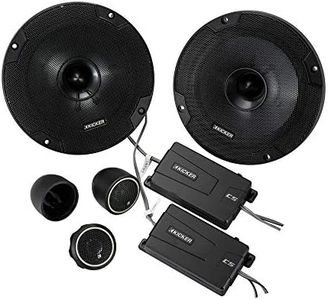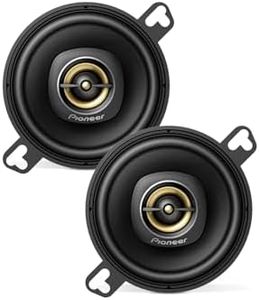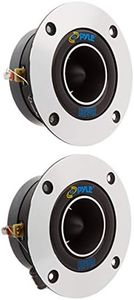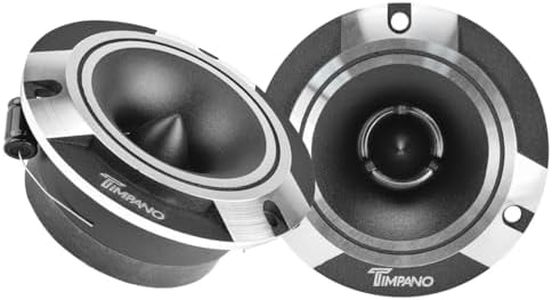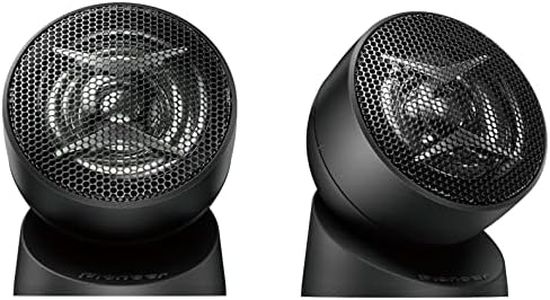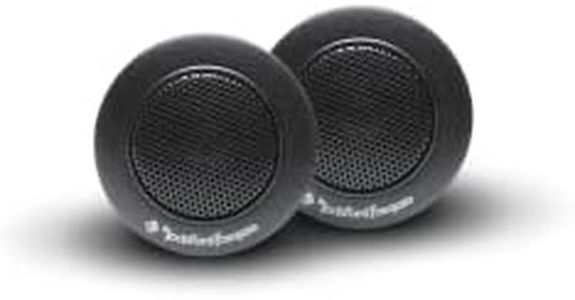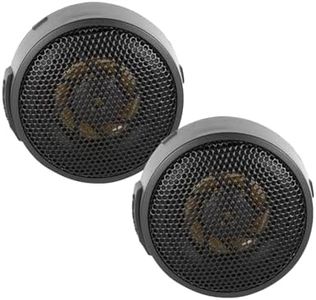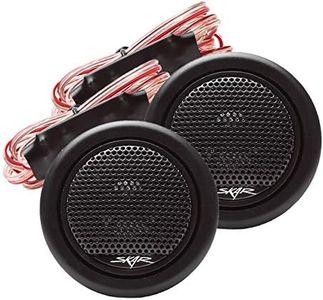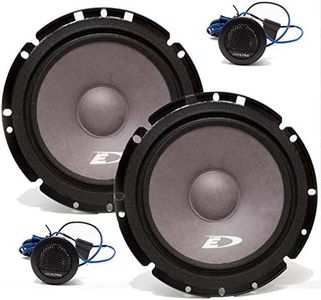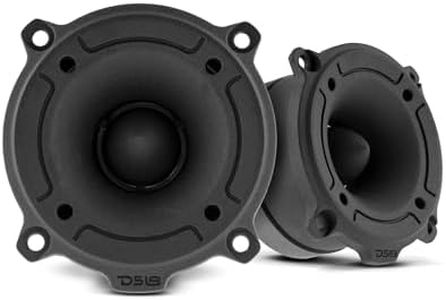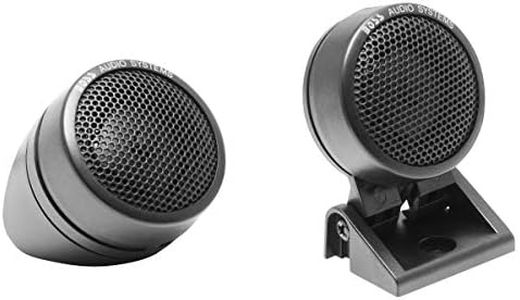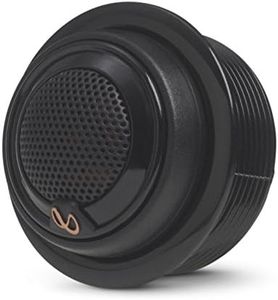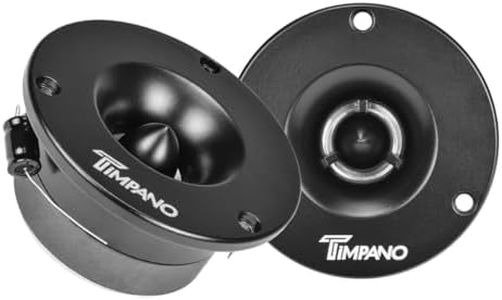We Use CookiesWe use cookies to enhance the security, performance,
functionality and for analytical and promotional activities. By continuing to browse this site you
are agreeing to our privacy policy
10 Best tweeters
From leading brands and best sellers available on the web.By clicking on a link to a third party's website, log data is shared with that third party.
Buying Guide for the Best tweeters
Choosing the right tweeters is all about finding the ones that match your audio needs and how you like to listen to music. Tweeters are responsible for playing the high-frequency sounds, like cymbals, vocals, and other bright tones in music. The right tweeter can add clarity and detail to your sound system, making your listening experience much more enjoyable. To make the best choice, it's important to know what each specification means and how it affects the sound. Think about what kind of music you like, where your tweeters will be installed (home, car, etc.), and what kind of sound makes you happiest. This way, you can focus on finding tweeters that fit your preferences instead of just going for the most impressive numbers.Frequency ResponseFrequency response tells you the range of high notes your tweeter can play, measured in hertz (Hz). The lower the number, the lower the high frequencies it can reach, and the higher the number, the more 'sparkle' or detail it can add. Most people can't hear much above 20,000 Hz, so tweeters that go to that range cover the needs of most users. If you like bright, detailed sound and listen to a lot of acoustic music or vocals, look for tweeters with a wide frequency response. But for casual listening, even the basic range is usually enough.
SensitivitySensitivity is a measure of how loud the tweeter can get with a certain amount of power, usually described as decibels (dB). The higher the sensitivity rating, the less power you need to make the tweeter loud. Sensitivity usually ranges from about 85dB to over 92dB. If you have a low-powered system, pick tweeters with higher sensitivity. If you have a powerful system, you have more flexibility. Your main goal is to match your tweeter's sensitivity to your sound system, so everything sounds balanced.
Power HandlingPower handling tells you how much power (measured in watts) the tweeter can handle without being damaged. A higher wattage means the tweeter can handle more powerful sound without breaking up. This comes in two forms: RMS (continuous power) and Peak (maximum power for short bursts). For most people, matching the power handling to your amplifier's output is key. If you play music loudly often or want to avoid distortion, choose tweeters with a higher power handling that fits your setup.
MaterialTweeters are made from different materials like silk, metal, or ceramics, and each one shapes the sound a bit differently. Silk sounds warm and smooth, metal (like aluminum or titanium) sounds bright and crisp, and ceramics provide detail and durability. If you like mellow sound, go for soft materials like silk or fabric. If you want more shine and detail in your music, choose metal or ceramic. Let your music taste and sensitivity to sharp or smooth sound guide you here.
Mounting TypeMounting type refers to how and where you can install the tweeter. There are flush-mount, surface-mount, and angle-mount options. Flush-mount blends in with your surface for a hidden look, surface-mount sits on top, and angle-mount lets you direct the sound to where you want it. Pick the one that fits your space and gives you the control you want over the direction of the sound. For cars, placement affects how well you hear the highs, so think about your setup and listening position.
ImpedanceImpedance, measured in ohms (Ω), tells you how easily electricity flows through the tweeter. Most tweeters are 4 or 8 ohms. Matching the impedance of your tweeter to your amplifier is important so you don’t damage your equipment or lose sound quality. If you aren’t sure, check the recommendations for your amplifier or receiver. This way, your tweeter will work efficiently and safely.
